Bartold’s Grove was once the place to spend those hot summer nights. What happened at Bartold’s Grove must have stayed at Bartold’s Grove. For nearly 100 years the Grove (the original one) was a pressure relief valve for over-stressed workers from the city.
Around 1840, Henry Bartold and his brother Frederick opened a stone and brick roadhouse at the current site of the Sunnen Corporation. Originally known as the Eight Mile House, it was the first stop for travelers heading west from downtown St. Louis. Eventually it came to be known as Bartold’s Grove.
The Grove served many purposes during its long life. It offered lodging, provided a picnic spot for well-to-do St. Louisans, and it was a place for night time merrymakers. The Globe-Democrat wrote, “anything to eat or drink might be obtained.” One regular customer explained that dancers would arrive at seven when the only evening Missouri Pacific train dropped off passengers. Then, “as there was not a train into St. Louis until the following morning at seven o’clock, this meant we danced all night.” Until Prohibition closed the Grove in the mid-1920’s, each Fourth of July over 300 Scots would gather in kilts and with bagpipes to celebrate American independence.
The Grove attracted many celebrities. General Grant was a frequent guest during the Civil War and probably after. Mark Twain sat side-by-side with Sam Hildebrand, an infamous outlaw. When the Grove was finally shuttered, the Globe-Democrat called it a tragedy, “to those who knew it when’ it lingers in memory along with big-wheeled bicycles, hoop skirts and penny arcades.
According to one local history buff, the Grove was later known as the Cool Cave Tavern which causes this writer to speculate that the building backed up to a cave. Larry Giles can recall exploring the derelict building when he was a child and living in Maplewood. His recollection is that it did not back up to a cave. I wonder if perhaps the entrance had been sealed by the time of Larry’s exploration. The building survived until the late 1950’s or early 60’s.
Much thanks to Joyce Cheney for some of the text and research in this article. This information was excerpted from, “Maplewood, the First 100 Years.”
First published on the Maplewood Patch website, 7/02/12. Doug Houser
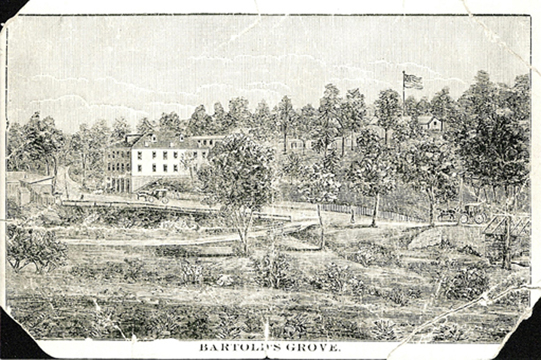
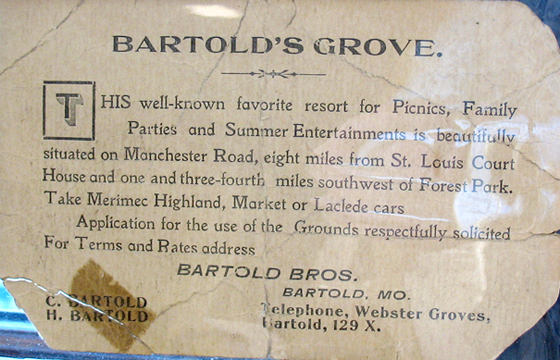


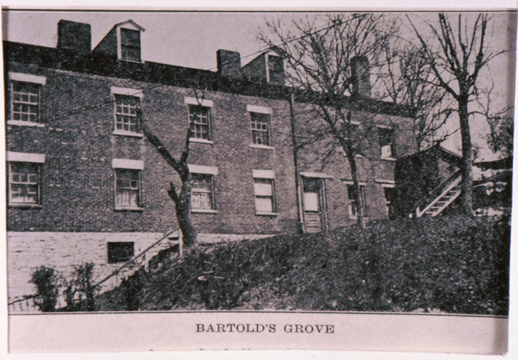

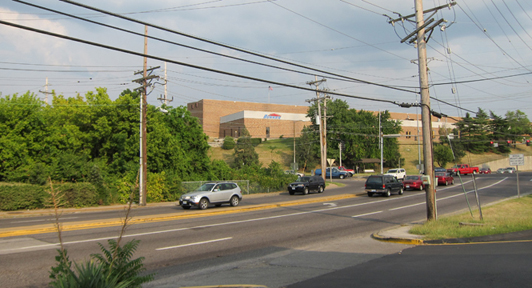
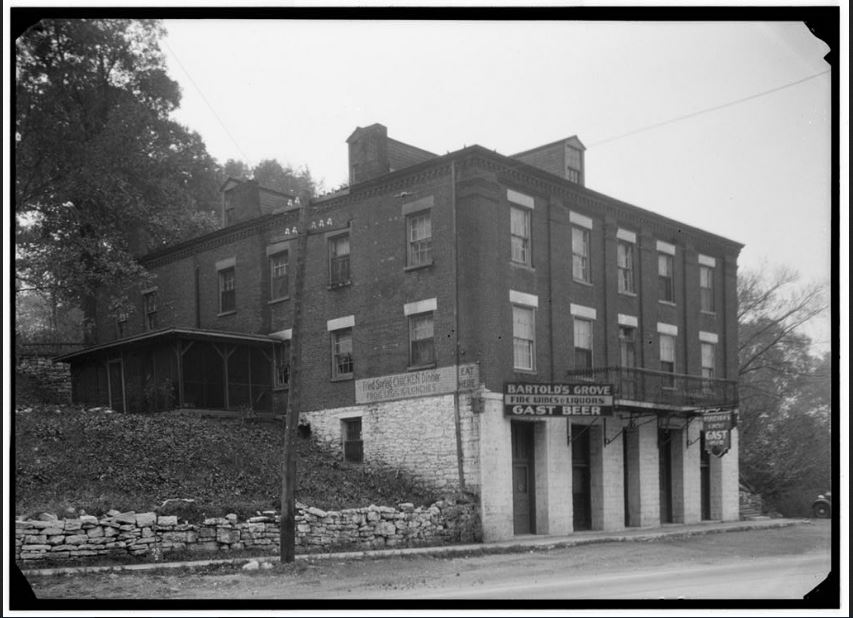
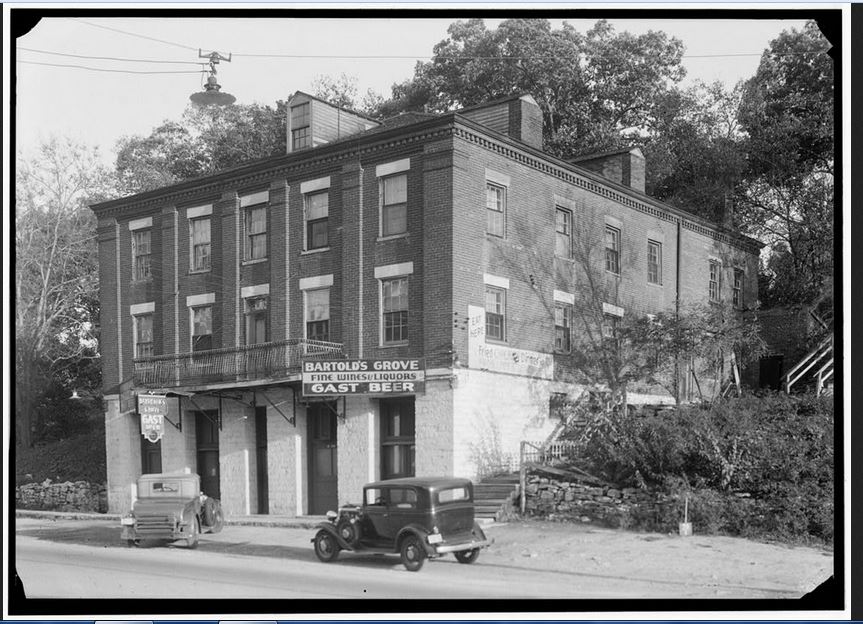
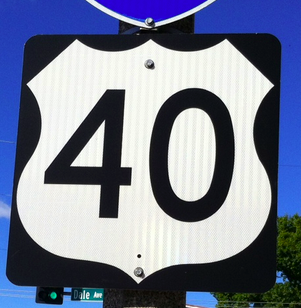
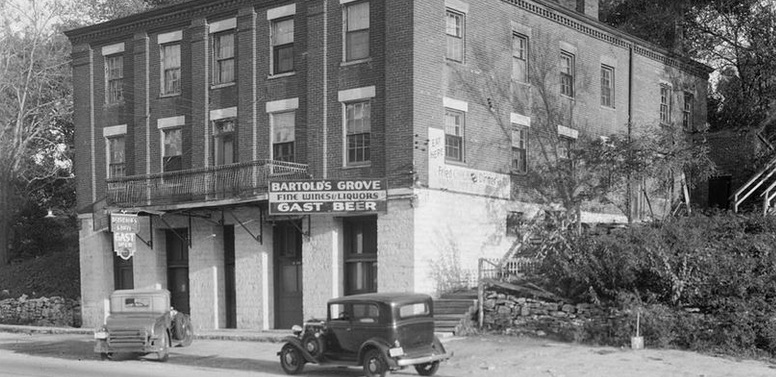
This comment came by email from the recently-retired-from-the-post-of-historian of St. Louis County, Esley Hamilton. “Bartold’s Grove is still shown on the 1959 map of county landmarks that was published by the Historic Buildings Commission, so the demolition must have occurred in 1960 or later. I remember being so disappointed when I went to look for the building about 1978, using the HABS photos.”
I can see why you were disappointed, Esley. What a great building with a past absolutely loaded with local history. Worst thing is we’re still having to fight to save them. When will they ever learn? Thanks for your comment.
Great work as usual. Muchas gracias.
Muy muchas gracias, Doug
Hi Doug, I think I told you this before, in case not, I will take opportunity to write it. Grant and Twain would meet each other at the Grove. They discussed the slaves among other topics of discussion. The results of these talks were mind changing and are believed by scholars to have resulted in the writing of “The Adventures of Huckleberry Finn”, and the sympathetic view of slave Jim. Later, The Twains were sitting on their porch with their black housekeeper and Samuel mentioned she was 60 and never had any trouble. She said, “Mr. C., are you in arnest?” and went on to tell of her terrible ordeals while held in the bondage of slavery, which included having her children sold away from her. Twain sent this story to his publisher, near verbatim, in a letter, telling him to do with it as he wished.
c
Wow! That truly is fascinating. I’d love to read more about it. Thanks for this info, Gary. And thanks to everyone else for all the kind words.
Fascinating. Wish we could find out more.
Doug, your articles are why I read 40 south every day. Thanks for providing a bridge to our past.
Good stuff! Thanks for sharing, Dougs.
Great post!
Very cool. There is all kinds of room for the imagination to ponder the happenings here.
Comments are closed.